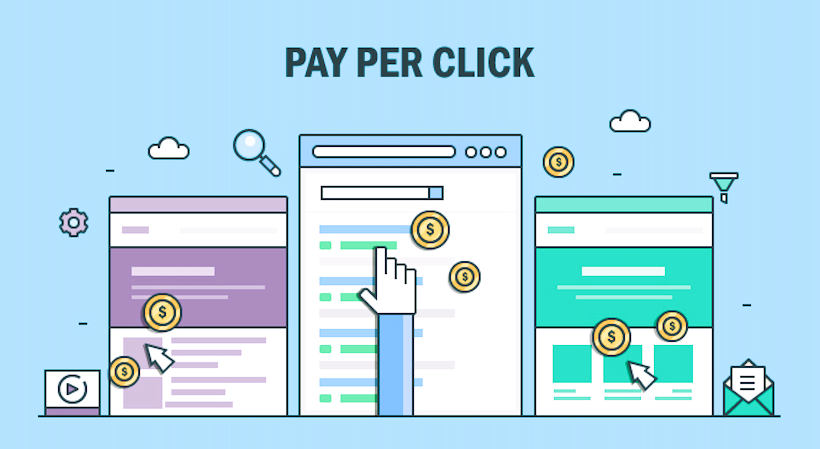Pay-per-click (PPC) advertising is one of the most effective ways to promote your game to a targeted audience and drive conversions. Whether you’re working with a mobile game, an indie game, or a large-scale gaming platform, PPC campaigns can help you reach new players, build brand awareness, and increase your game’s visibility. However, to run an effective PPC campaign for your game, you need to understand the core principles, tools, and strategies involved. Here’s a step-by-step guide to help you launch a successful PPC campaign for your game.
1. Set Clear Campaign Goals
Before you dive into creating a PPC campaign, it’s essential to define your goals. Do you want to increase game downloads, boost in-game purchases, or raise brand awareness? Setting clear and measurable objectives will help you create a more focused and effective PPC strategy.
Some common goals for gaming campaigns include:
- Increasing installs for mobile games.
- Maximizing purchases for in-game items.
- Building brand awareness among gamers.
2. Choose the Right PPC Platform
Selecting the right platform for your PPC campaign is crucial. Different platforms allow you to target various segments of gamers, from casual mobile players to hardcore PC gamers. Here are some popular PPC platforms for gaming ads:
- Google Ads: Ideal for targeting search queries and display ads across the Google network. Google Ads provides detailed targeting options such as geographic location, device, and interests.
- Facebook Ads: Facebook allows you to target gamers based on their behaviors, interests, and even the games they play. It also supports Instagram, making it perfect for reaching mobile and social gamers.
- Twitch Ads: As one of the most popular platforms for gamers, Twitch allows you to run ads targeting live-stream viewers and gaming enthusiasts.
- YouTube Ads: With billions of active users, YouTube provides a great platform for running video ads promoting your game, especially trailers and gameplay footage.
3. Target the Right Audience
Targeting the right audience is key to the success of your PPC campaign. Whether you’re targeting hardcore gamers or casual players, make sure your ads are shown to the people most likely to be interested in your game.
Here are some targeting options:
- Demographics: Age, gender, and geographic location can all influence how your ads perform.
- Interests: Target users who have shown an interest in gaming, related genres, or similar titles.
- Behavioral Targeting: Use past search behavior or past purchases to target users who are most likely to engage with your ads.
4. Create Engaging Ad Copy and Creative
For a successful PPC campaign, your ad copy and creative should capture the attention of your audience. Whether it’s a catchy headline, an exciting call-to-action (CTA), or a visually stunning banner, the goal is to entice potential players to click on your ad. Read about how SEO helps games rank higher in search engines.
Some tips for effective ad copy and creative:
- Use compelling visuals: Show off your game’s best features in the ad creative.
- Highlight key benefits: Focus on the unique aspects of your game that set it apart from others.
- Include a strong CTA: Encourage users to take action, like “Download Now” or “Play for Free.”
5. Optimize Landing Pages

Once users click on your ad, they should be directed to a landing page that matches the ad’s messaging and delivers a seamless experience. Ensure that your landing page is optimized for conversions, with easy access to downloading or purchasing your game. Avoid excessive distractions or unnecessary steps that could lead users to abandon the page.
Key landing page elements include:
- A clear headline that aligns with the ad.
- Download buttons for mobile games or a direct link to your game’s platform.
- Social proof, such as player reviews or gameplay footage, to build trust.
6. Monitor and Optimize Your Campaigns
Running an effective PPC campaign requires ongoing monitoring and optimization. Regularly review your ad performance to identify areas for improvement. Some metrics to track include:
- Click-through rate (CTR): The percentage of people who clicked your ad after seeing it.
- Conversion rate: The percentage of users who completed the desired action, such as downloading the game or making a purchase.
- Cost per click (CPC): The average cost you’re paying for each click on your ad.
Use this data to adjust your targeting, bidding strategy, and creative to improve your results.
7. Retargeting Campaigns
Don’t forget about users who have interacted with your game before but didn’t convert. Retargeting allows you to show ads to these users, reminding them to take action. Whether they abandoned the game’s download page or played the game but didn’t make an in-app purchase, retargeting can help you increase conversions and improve ROI.
Running an effective PPC campaign for games is about choosing the right platform, targeting the right audience, creating engaging ads, and continuously optimizing your campaigns based on data. With these strategies in place, you can increase your game’s visibility, drive more installs or purchases, and ultimately build a loyal player base.
For more information about the standards and guidelines in digital advertising, check out this Wikipedia page on PPC advertising.
By following these steps and leveraging PPC strategies, you can ensure that your game stands out in a crowded marketplace, helping you attract and retain the players you need for success.






